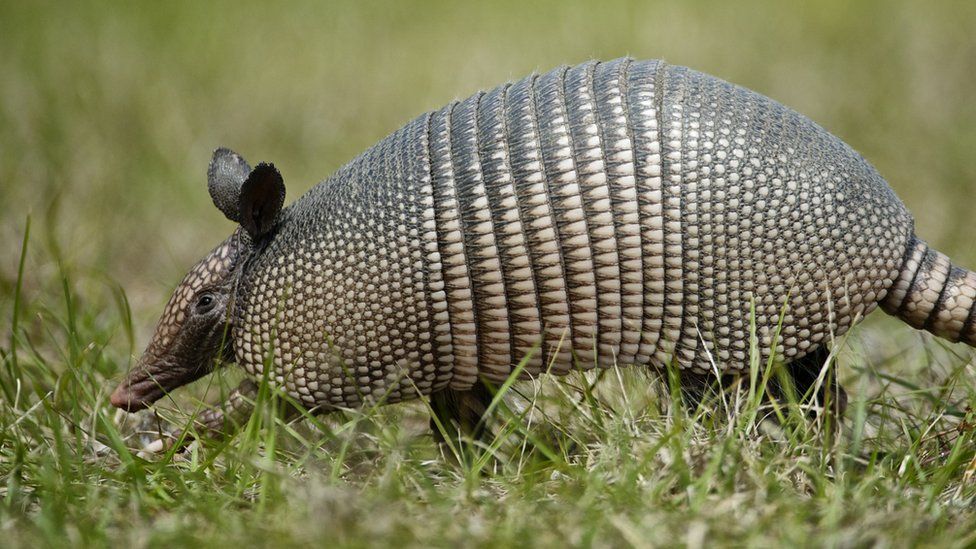Animal experiments have uncovered the bacteria's remarkable ability to almost double the size of livers by stimulating healthy growth.
It is a sneakily selfish act that gives the bacteria more tissue to infect.
But working out how they do it could lead to new age-defying therapies, the scientists say.
'Biological alchemy'
Leprosy causes disability when it infects the nerves, skin and eyes.
Throughout history, those infected have been shunned.
But the bacterium that causes it, Mycobacterium leprae, has other, unusual properties, including the ability to perform "biological alchemy", converting one type of bodily tissue into another, which are fascinating scientists.
So the researchers turned to another animals that catches the disease - armadillos.
The experiments, which were performed in the US, showed the infection heads to the armoured animals' livers, where it performed a controlled hijacking of the organ to reprogram it for its own purpose.
"It was totally unexpected," Prof Anura Rambukkana, from the University of Edinburgh's centre for regenerative medicine, told me.
The results, published in Cell Reports Medicine, showed the liver nearly doubled in size.
You might expect such growth to be defective or even cancerous - but detailed analysis showed it was both healthy and functional, complete with the usual array of blood vessels and bile ducts.
"It is kind of mind-blowing," Prof Rambukkana said. "How do they do that? There is no cell therapy that can do that."
Rapidly increase
It appears the leprosy bug is rewinding the developmental clock in the liver.
Fully grown liver cells are metabolic powerhouses with hundreds of jobs in the body.
But the bacteria are taking them back a stage - like becoming a teenager again - where they can rapidly increase in number before maturing back into adulthood.
Interrogating the activity of different parts of the cells' DNA revealed a picture more akin to that of a much younger animal or even a fetus, when the liver is still forming.
'Natural process'
But the precise details of how this is all happening remain elusive.
Nobel Prize-winning research has shown it is possible to forcibly turn the clock all the way back to the point at which cells regain the ability to become any other type of cell in the body - but this runs the risk of turning them cancerous.
"The [leprosy] bugs use alternative pathways," Prof Rambukkana told me.
"It's a much safer way and they take a longer time to do that, so this is a natural process."
'Promising results'
The hope is the approach can be harnessed for repairing the livers of people waiting for a transplant - or even to reverse some of the damage caused by ageing elsewhere in the body.
"The dream is to use the same bacterial strategy, to use the ingenuity of bacteria to generate new medicines for regeneration and repair," Prof Rambukkana said.
"If you can harness that, you should be able to turn that mechanism into a jab you have every three months or something."
All these ideas remain untested, however.
Dr Darius Widera, of the University of Reading, said: "Overall, the results could pave the way for new therapeutic approaches to the treatment of liver diseases such as cirrhosis.
"However, as the research has been done using armadillos as model animals, it is unclear if and how these promising results can translate to the biology of the human liver.
"Moreover, as the bacteria used in this study are disease-causing, substantial refinement of the methods would be required prior to clinical translation."


Comments
Post a Comment